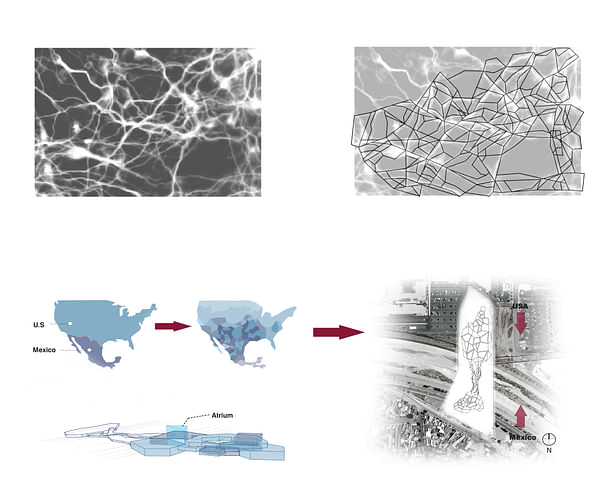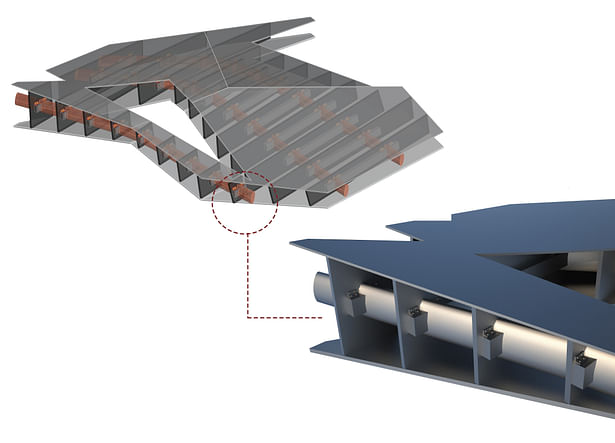
Blurring between two nations
As neighboring countries, the United States and Mexico share a deep history that is characterized by a vivid mix of cultures constantly exchanging ideas, work, land, and people. Located at the epicenter of this ongoing cultural infusion is the border separating the two countries which acts as a semi permeable membrane allowing a limited amount of trade to occur across this threshold. Through the study of the controversial relationship the two countries have with one another, a relation to neuron systems was made specifically referencing the knowledge that neurons are able to zap messages to other neurons without physical interaction taking place. The concept was implemented into the design of interior spaces which will allow for two separate territories to inhabit one building with shared spaces and level changes that provoke indirect interactions. A blurring of the separation of the countries occurs on the site through interlocking program which makes the current border obsolete and presents an indistinguishable border, intertwining the countries instead of separating them.
A voronoi pattern was then imposed onto the site and through methods of deduction; a plan was formulated to determine where program, circulation, atrium spaces, and voids would occupy on the site. The shapes of programs were then limited to practicality, avoiding sharp angles or virtually unusable spaces. The circulation of the buildings allow for passage of Mexican citizens onto United States land via river overpass but their programs remain separate from that of the United States. The programs most private to Mexico are placed on the Mexican side of the border while more public spaces such as the auditorium, cafeteria,lecture halls, and theater are located on the U.S. side to encourage a mix of knowledge and cultivation.
Status: School Project
Additional Credits: Collaboration : Kelly Ta

